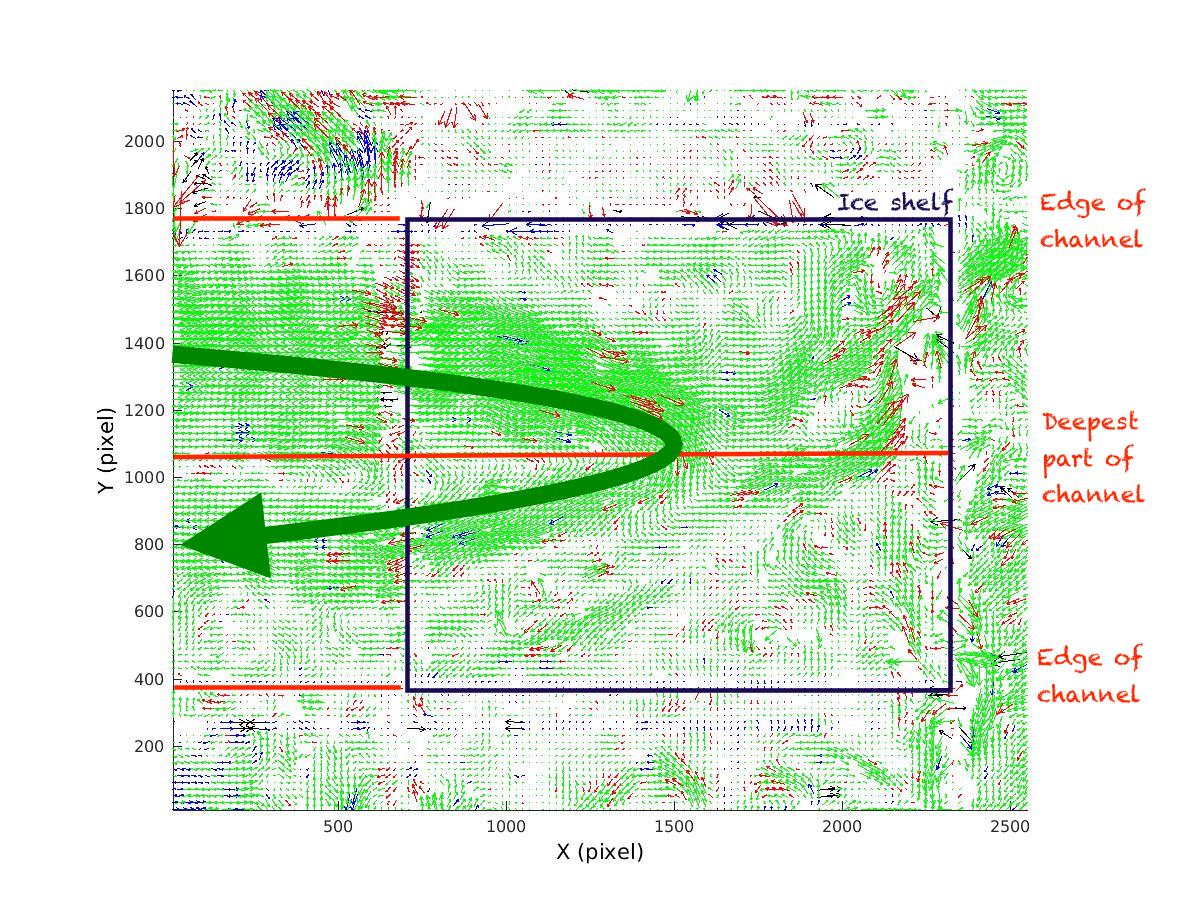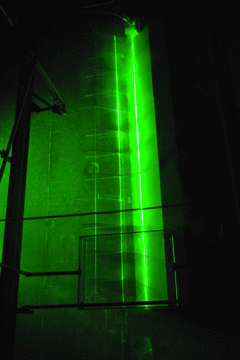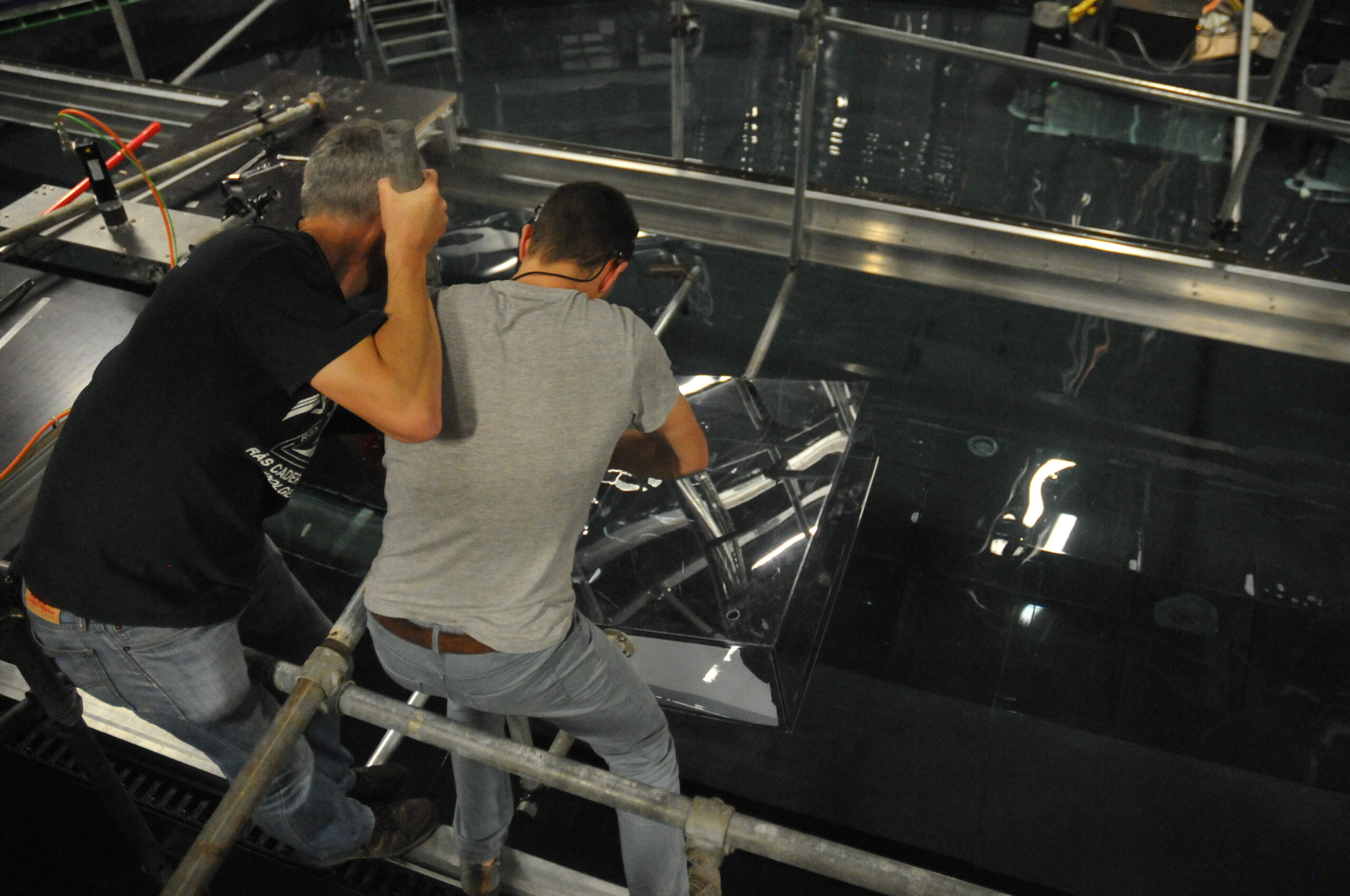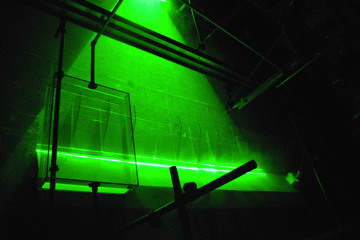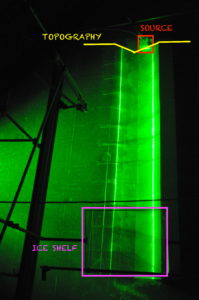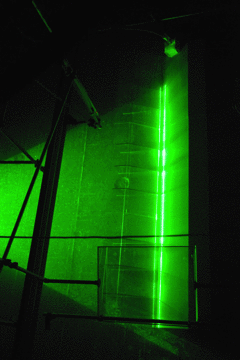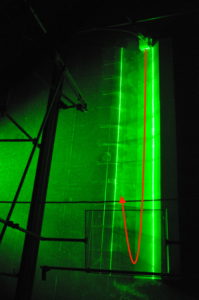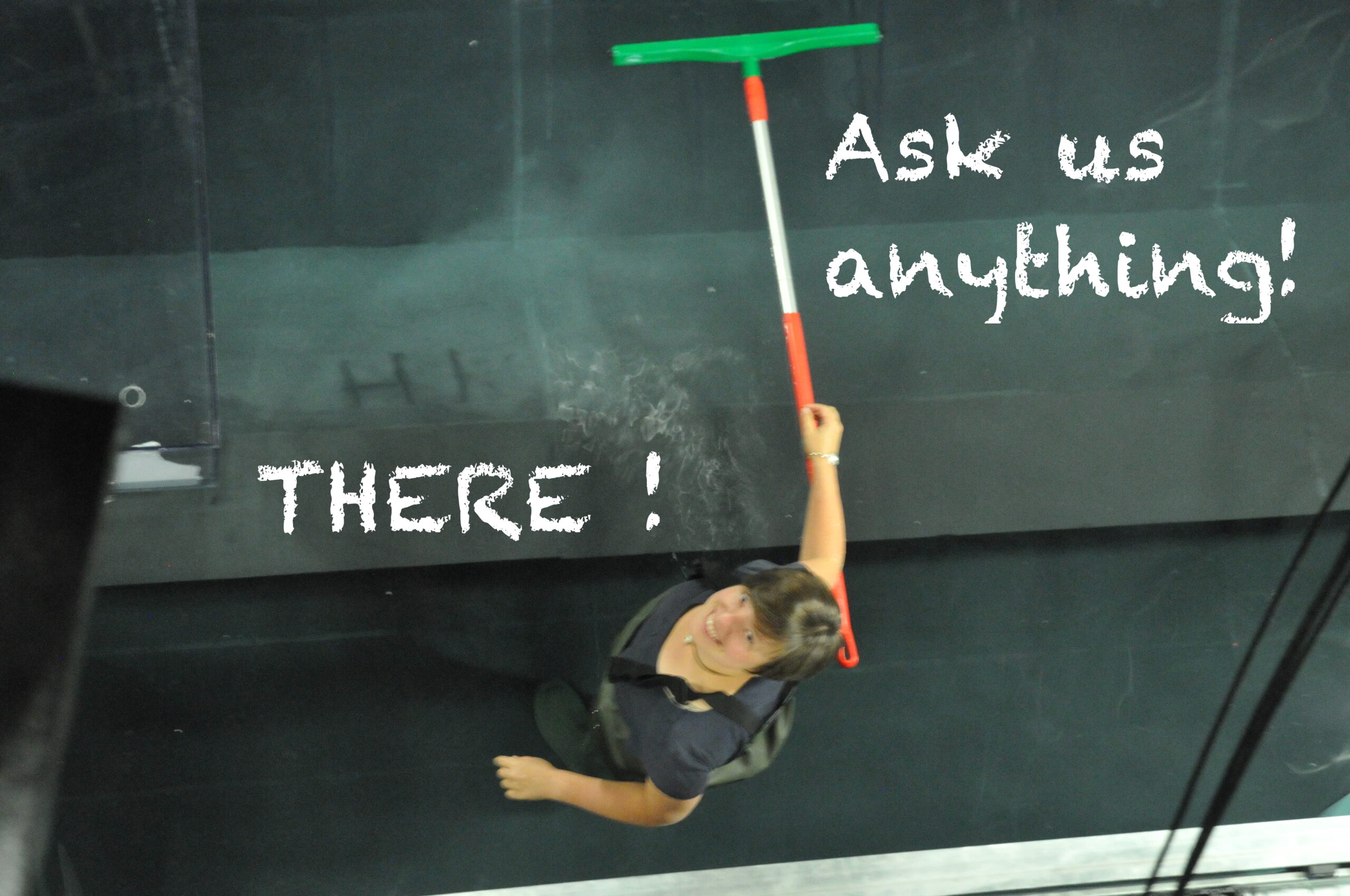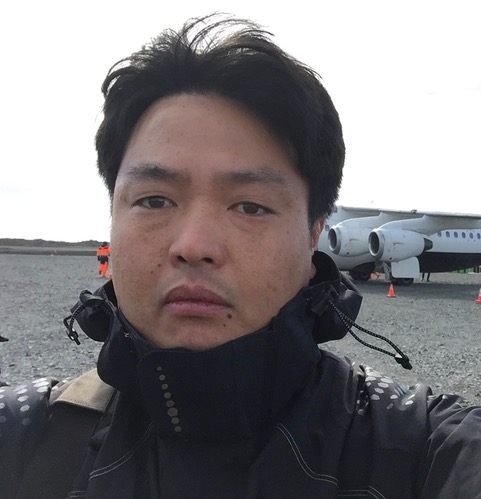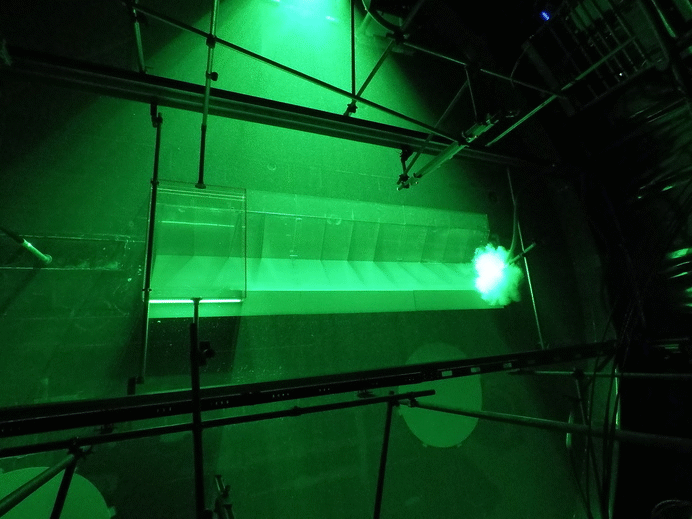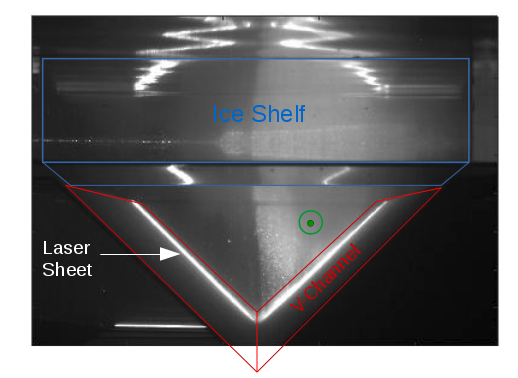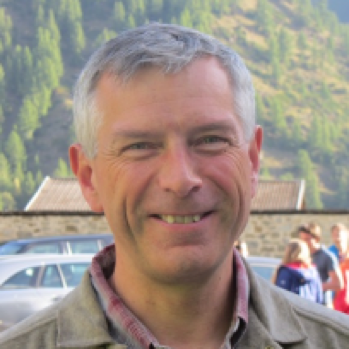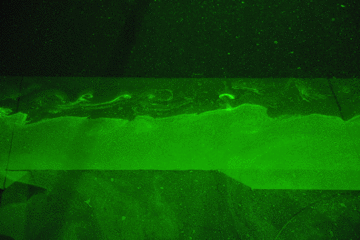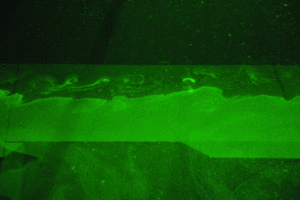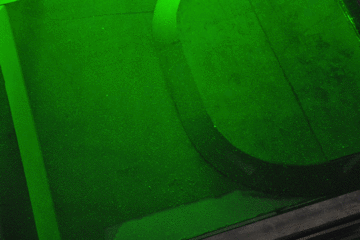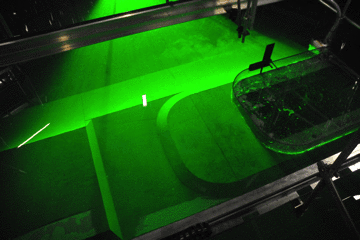Reposting from Sci/Why “where Canadian children’s writers discuss science, words, and the eternal question – why?”, where we got to feature our experiments a couple of days ago:
Have you ever wondered what happens when you put a 13-m-diameter swimming pool on a merry-go-round? Probably not. But I am here to tell you today about what happens when you do just that, and what you can learn from doing so.
I am part of an international group of scientists, doing research on currents in the ocean (and you can read more about who we are and what you do on our blog: https://elindarelius.no). Specifically, we are interested in how warm water is transported towards an Antarctic ice shelf. As you can imagine, Antarctica is not the easiest place to travel to and measure the ocean, especially not during winter. There are some observations of warm water reaching the ice shelf and contributing to melting the ice, but it is not known yet under what conditions this happens.
Why a pool?
In order to understand how water behaves in the ocean, we are reproducing real-world features that we suspect have an important influence on the current’s behavior, but in miniature, and inside our water-filled tank. Then we can modify those features and observe which parts of them actually determine how the water flows, and which parts are not as important. In our case, we are changing the miniature coastline of Antarctica to see what makes the current turn and flow into a canyon instead of just going straight ahead.
Why rotation?
We need to rotate the tank to represent the Earth’s rotation. This is because the Earth’s rotation influences all large-scale movements on Earth, including ocean currents: Moving objects get deflected to their left on the Southern Hemisphere. Below is a short video of the rotating, empty tank, to show you what happens when you roll a ball in the rotating tank: It does not go straight ahead but just curves to the side!
[vimeo 233272527]
Before Nadine, the scientist shown in the video, climbed into the tank, you saw her walking alongside it. Even though the tank was turning very slowly (only one rotation per 50 seconds), she had to walk quite fast to keep up! This is how fast we need to spin the tank in order to have it rotate at the right speed for the size of our Antarctica.
How does it all work?
There is only one tank of this size — 13 meter diameter! — in the world, and it is situated in Grenoble, France. Researchers from all over the world travel to France to do their experiments in this tank for a couple of weeks each. In the gif below, you see the tank rotating: First, you see an office moving past you (yes, there are several floors above the water, including the first one with an office, computers, desks, chairs and all! That’s where we are during experiments, rotating with the tank) and then you can see the water below, lit in bright green.
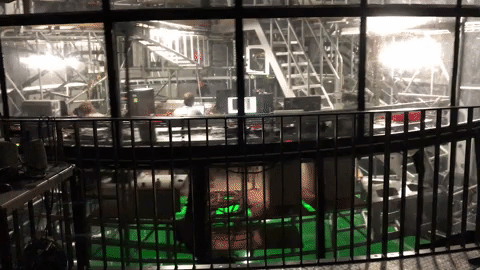
There is a huge amount of effort and money going into running research facilities like this, and everybody working with the tank needs to be highly specialized in their training.
What do experiments look like?
When there is water in the tank, we need some special tricks to show how the water is actually moving inside the tank. This is done by seeding particles, tiny plastic beads, into the water and lighting them with a laser. Then special cameras take pictures of the particles and using complicated calculations, we can figure out exactly how the currents are moving. Below, you see a gif of one of our experiments: The current starts coming in from the right side of the image, flowing along our model Antarctica, and then some of it turns into the canyon, while most of it just goes straight ahead.
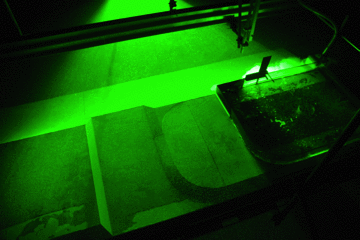
Depending on the shape of our Antarctica, sometimes all the water turns into the canyon, or sometimes all of it goes straight ahead.
What have we learned?
That’s a difficult question! We are still in the middle of doing our experiments, and the tricky part with research is that doing the experiments (even though that can be a huge undertaking as you see when you look at what a huge structure our tank is, or what enormous effort it requires to go to Antarctica with a research ship) is only a tiny step in the whole process. Nadine, who you saw in the movie above, is one of several people who will work on the data we are currently gathering for the next four years! But even though we are not finished with our research, there are definitely things we have learned. For example, the length of Antarctica’s coast line that the current flows along before the canyon interrupts its flow is very important: The shorter it is, the larger the part of the current that turns into the canyon. How all our individual observations will fit together in a larger picture, however, will still take months and years of work to figure out.
Where can I learn more about this?
If you have any questions, we would love to hear from you! We are hosting an “Ask Me Anything” event on October 18th (link here: https://oceanama.com/hi-i-am-mirjam-we-are-investigating-ocean-currents-in-a-13-m-diameter-455228/ but you can also leave questions on our Facebook page: https://www.facebook.com/EDareliusAndTeam/ or directly on our blog: https://elindarelius.no)
